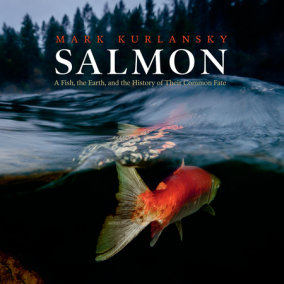

“The idea is we could mimic volcanos and counteract some of the warming,” she said. As Kolbert noted, when volcanic eruptions darken the sky, temperatures cool. Such interventions are now being considered on a global scale, including attempts at geoengineering or solar radiation management to counter global warming. “People started to do all this crazy stuff to get the fish to reproduce,” said Kolbert. In the latest response, conservationists have built a replica of Devil’s Hole, down to the shape of the rocks, as a “refuge tank” environment. Although the Supreme Court sided with conservationists, the pool and the pupfish have not recovered and attempts to breed the animals in aquariums have failed. That pool is fed by an ancient aquifer that began to be noticeably depleted by human use in the 1960s. Williams and Kolbert discussed the case of the Devil’s Hole pupfish, chronicled in “Under a White Sky.” Possibly “the rarest fish in the world,” according to Kolbert, the 1½-inch-long, iridescent blue fish lives only in a thermal heated pool in the Mojave Desert. “Each loss doesn’t get marked, and I see my role to a great extent as bearing witness.” “One of the things that is shocking to me is the way we just trundle on,” said Kolbert, whose 2014 book “The Sixth Extinction” was awarded a Pulitzer Prize. I can watch all the ash trees dying, being done in by the ash borer. I can see all the invasive species that are right here in New England. “When I go around the world, I can see what’s missing.



“Everyone is struggling,” Kolbert said, “even if the struggle is to push the information away.” Her focus, she said, is on communicating the truth of what she sees on her beat: climate change. Williams began the conversation by citing the impact of rising sea levels and asking, “How do we navigate these waters?” It also featured Samuel Myers, director of the Planetary Health Alliance and principal research scientist at the T.H. The Divinity School event, hosted by writer in residence Terry Tempest Williams, was part of the series “Weather Reports - The Climate of Now,” a partnership with the Center of the Study of World Religions, Religion and Public Life, and the Planetary Health Alliance. It is also the theme of Kolbert’s latest book, “Under a White Sky: The Nature of the Future.” If human activity is killing the planet, can humans engineer a solution to save it? That was the question that ran through “The Climate of Attention,” a Harvard discussion with Elizabeth Kolbert, a New Yorker staff writer and Pulitzer Prize-winning author, on Nov.


 0 kommentar(er)
0 kommentar(er)
